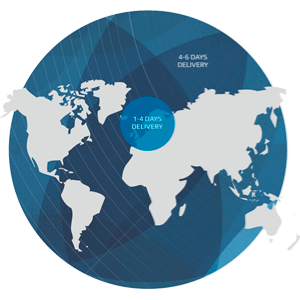Rabobank: World meat production will decline in 2022

Rabobank said higher production costs for animal protein supply chains will be the main drivers of change, with constant change driven by the shift to more sustainable animal protein, biosecurity concerns and covid-19.
In 2022, the global animal protein market expects the same level of uncertainty, according to a Rabobank forecast. While markets are expected to stabilize somewhat in 2022, many of the drivers of recent change will remain. Among these, higher production costs for animal protein supply chains, including animal feed, labor, energy and freight, will be the main drivers. They will be accompanied by constant changes caused by the transition to more sustainable animal protein, biosecurity issues and Covid-19.
The overall trend for 2022 is continued but slower growth in production from pork, poultry and aquaculture. it is expected that the production of beef and wild animals will decrease slightly. The ongoing recovery in China's pig population will be the biggest driver of growth in global markets in 2022, analysts say. Against this backdrop, animal protein prices should remain stable in 2022 (with a few exceptions), supported by continued supply constraints and an overall increase in demand. “We expect the leaders of progressive animal protein companies to focus on the opportunities created by the ongoing market disruption, rather than view multiple changes as business risks only,” said Justin Sherrard, global strategist at Animal Protein.
According to the report, domestic pork consumption in Europe needs to rise to balance the markets. At the same time, despite higher costs, the poultry industry must improve the opening of all channels. In addition, Southeast Asia's poultry sector is expected to pick up production after two years of severe Covid-19 impacts. Pork will also recover from exposure to ASF and Covid-19, but at a slower rate. Meanwhile, in CHINA, the recovery in pork production is expected to continue, but the path remains uncertain while consumption and prices remain low. Demand for beef will remain strong, while poultry will be pressured by a recovery in pork.
In North American markets, continued growth in demand will support production and prices. Production restrictions can spoil the result, which is considered a positive year. Brazil will continue its rise as one of the top MEAT exporters, although domestic demand is also growing, while Australia's beef and lamb supply will gradually improve. Continued demand for New Zealand exports and limited supply are positively impacting profitability, the report said.
Read together with it:
- An HSE expert reported on the "evolution of inequality" in access to healthcare.An HSE researcher analyzed Russians' access to healthcare over a ten-year period. In 2021, the influence of financial factors became noticeable for the first time: low income reduces the likelihood of visiting a DOCTOR.Over the ten years from 2011 to 2021, the number of Russians requiring medical care but not receiving it remained virtually unchanged, according to a study by Lyudmila Zasimova, hea...
- The IEA sees a risk of a decline in oil production in Russia due to sanctions.The IEA sees a risk of reduced oil production in RUSSIA due to US sanctions , but maintains its production forecast. According to the IEA, Russian oil exports will remain unchanged.There is a "significant downside risk" to Russia's oil production forecast due to US sanctions, the International Energy Agency (IEA) said in a report.BLOOMBERG . The agency's experts believe that the latest US sanction...
- "Коллективы АПК способны решать любые задачи даже в непростых условиях". Назаров о заслугах сельхозпроизводителейЮрий Назаров 13 ноября, Минск. Обеспечение продовольственной безопасности страны - большое достижение трудовых коллективов аграриев, отметил управляющий делами Президента Республики Беларусь Юрий Назаров на торжественной церемонии награждения государственными и иными наградами работников АПК Управления делами Президента Республики Беларусь, передает корреспондент БЕЛТА. Торжественная церемония наг...
- Sustainable growth of the food and processing industries in BashkortostanIlshat Fazrakhmanov, Deputy Prime Minister andThe regional Minister of Agriculture noted that the development of these industries provides the population with essential food products and contributes to increased exports. Since 2020, agricultural exports from the region have doubled. Since the beginning of 2......
- Низкое предложение и устойчивый спрос: в Аргентине растут цены на мясоЦены на говядину снова выросли, что отразилось на полках супермаркетов и в мясных магазинах. За последние две недели розничные цены выросли на 8–12%, а на некоторые популярные отрубы рост превысил 15% по сравнению с октябрем. Тем не менее, продажи остаются высокими: потребители продолжают покупать, принимая новые цены и закрепляя тенденцию, которая повторяется каждый год в конце года, когда спрос ...
- Китайский рынок мяса: консолидация, меры безопасности и проблема субпродуктов«Мы завершаем выставку CIIE в Шанхае, в целом хорошую выставку, где мы видим консолидированные цены, как это было с начала года, но в то же время рынок ожидает решения по защитной мере, определения которой должны быть даны в конце ноября», — сказал он Valor Agregado Agro. Лидер пояснил, что глобальная ситуация характеризуется «колебаниями на международном рынке, вызванными интенсивной геополитичес...
- В Братске пресечён ввоз 12 килограммов мяса и молочной продукции из Монголии из-за угрозы эпидемииВвоз этих товаров был запрещен в связи с неблагополучной эпизоотической ситуацией в Монголии, что нарушает ветеринарное законодательство Евразийского экономического союза. Против четырёх граждан Монголии начато административное разбирательство по части 1 статьи 10.6 КоАП РФ. Запрещённые продукты были возвращены в Монголию. Регулярные проверки автотранспорта, движущегося через МАПП «Кяхта», проводя...
- Princess Eugenie's art gallery has been accused of violating sanctions against Russia.According to British authorities, Hauser & Wirth supplied "luxury goods to individuals associated with Russia" between April and December 2022. The Times reports that the person in question is Princess Eugenie of York, a Moscow-based collector.HM Revenue & Customs has accused the contemporary art gallery Hauser & Wirth, whose London branch is directed by Princess Eugenie of York, the daughter of P...


